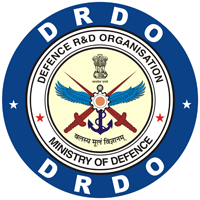Nanocrystalline Pentaerythritoltetranitrate using Sol-Gel Process
DOI:
https://doi.org/10.14429/dsj.61.594Keywords:
Explosives, sol-gel process, PETN, xerogel, TEMAbstract
The secondary explosives developed with reduced particle size tend to be more insensitive for mechanical stimuli and may release energy with faster rate and gaining more importance nowadays. Therefore, aiming to reduce the particle size of one of the popular explosives, viz., pentaerythritoltetranitrate (PETN) to the nanometer range, a method for preparation of nanocrystalline PETN in the silica (SiO2) gel matrix using sol-gel process has been demonstrated. The PETN-SiO2 xerogels were prepared containing PETN content ranging from 50 per cent to 90 per cent (w/w) and the xerogels were characterised using different techniques. An exothermic peak at around 185 oC preceded by an endotherm in thermal analysis accompanied with weight loss in the temperature range from 150 oC to 200 oC for the xerogel confirmed the presence of PETN in xerogel. Infrared spectra of xerogels showed peaks at around 1285 cm-1 and 1700 cm-1 assigned to O-NO2 and C-O bond representing PETN. Small angle x-ray scattering measurements on xerogels indicated that PETN entered in the pores of silica matrix. Transmission electron microscopy revealed that cystalline PETN with particle size of around 15 nm dispersed in silica xerogel. The specific surface area for the PETN-SiO2 (90:10) xerogels was found to be 75 m2/g.
Defence Science Journal, 2011, 61(6), pp.534-539, DOI:http://dx.doi.org/10.14429/dsj.61.594
Downloads
Published
How to Cite
Issue
Section
License
 Where otherwise noted, the Articles on this site are licensed under Creative Commons License: CC Attribution-Noncommercial-No Derivative Works 2.5 India
Where otherwise noted, the Articles on this site are licensed under Creative Commons License: CC Attribution-Noncommercial-No Derivative Works 2.5 India

